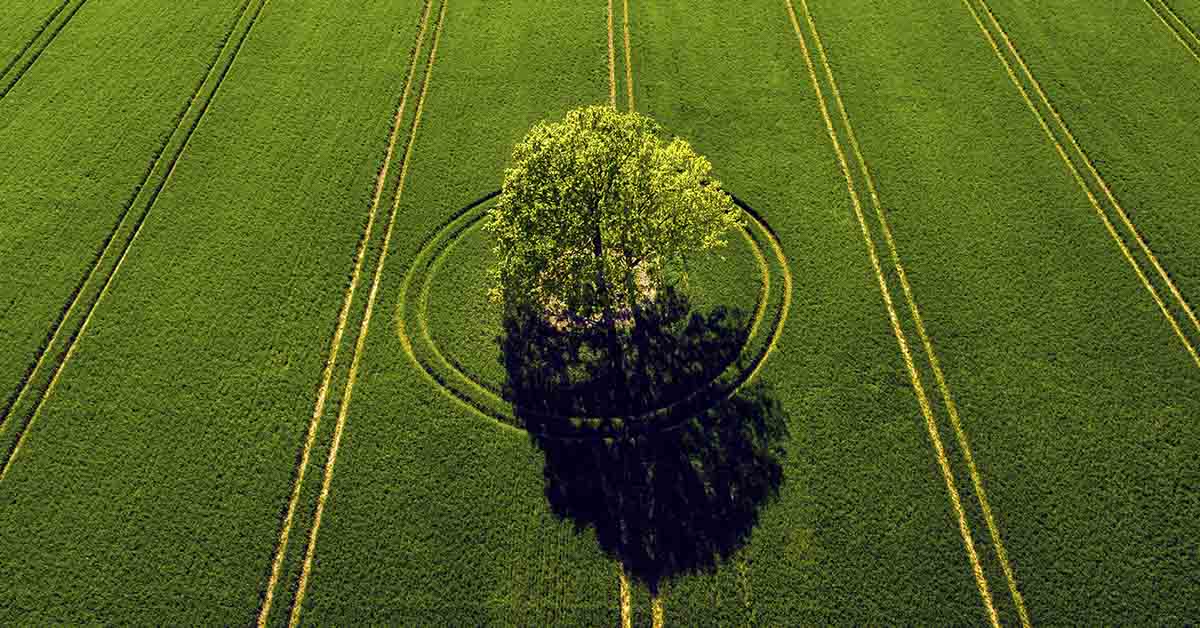If you visit a farm, you probably expect sweeping fields of growing crops. What you don’t expect is a lone tree towering over them. It looks out of place, like it arrived at a party after it was over. Plus, more land means more produce and more income, so it seems strange to waste precious space on a tree that does not pay rent. Still, many farmers leave one tree in the middle of their field and they earn their keep even without bearing crops.
Why is there a tree in the middle of a field?
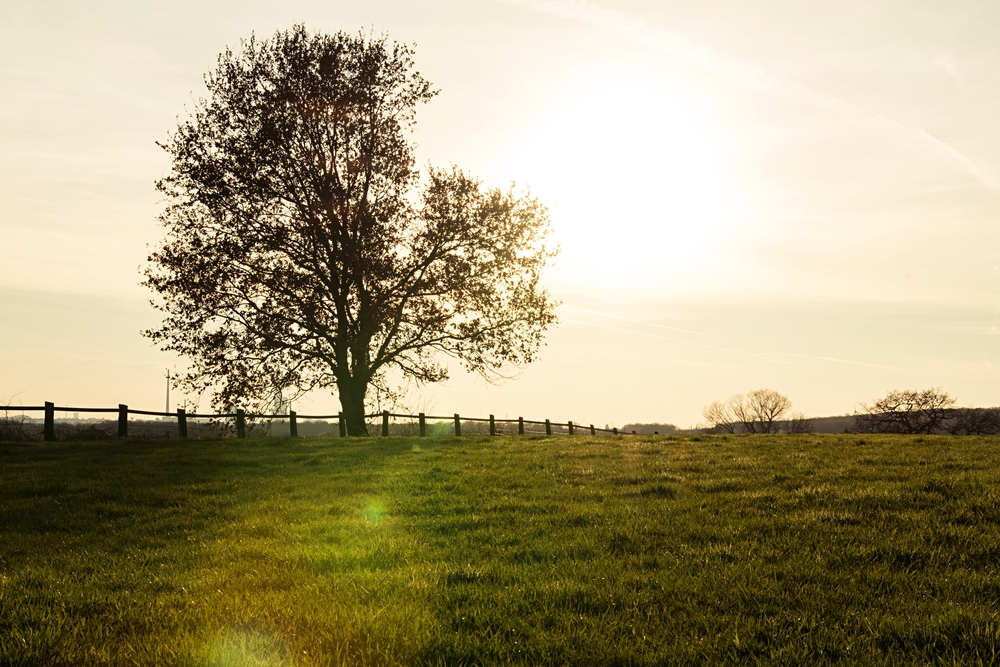
First, let’s note that this is not a universal farming rule. Sometimes, instead of one tree, there are three or four or none at all. And they are not always in the middle of the field. If you ask farmers why they keep the lone tree, they might have different answers, but in the past, it was all for the same reason: shade. Before tractors came along with their sun covers, farmers were stuck working in the bright, unrelenting sun. A tree provided a shady respite as they took breaks throughout the day. Animals would also congregate around it to get out of the heat. Although other sources of shade are available nowadays, farmers may leave the tree in the field as a monument of the past. And they can still take breaks under it.
The trees may also be used as markers. For example, farmers and their team can track their progress in relation to the lone tree. Or, it can mark areas plows should avoid, like swampy grounds, immovable boulders, foundation of old barns or homes, or other obstructions
The perks of agroforestry
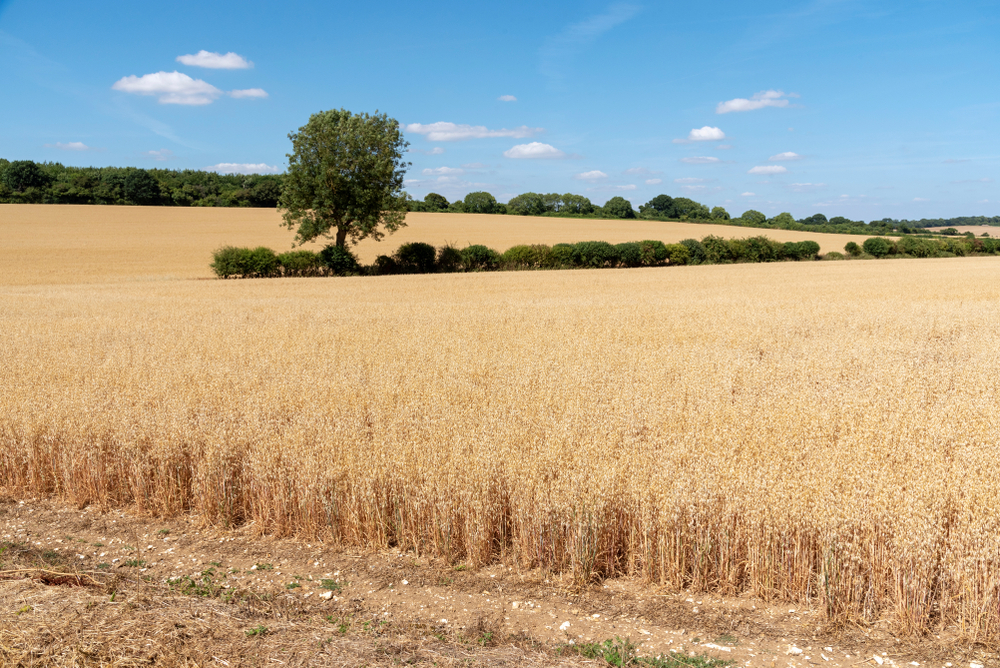
However, the trees can do more than shelter and direct humans. They can greatly benefit the crops, according to Defra’s Farming and Countryside Programme, which is why some farm perimeters are lined with them. This is known as agroforestry, which is simply defined as adding trees to agriculture or pasturelands. You may not have noticed a lone tree in a field, but you’ve seen a line of hedges around farmland. For one, trees can prevent the field from losing nutrients by absorbing excess compounds from manure or fertilizers. This can also protect surrounding wildlife and bodies of water from high amounts of these compounds, which can be detrimental in high amounts. Trees also help protect the crops from topsoil erosion, which is when rainfall or strong winds remove the nutrient-rich top layer of soil. The trees have deep roots that provide stability to the soil and leaves provide organic matter.
Animals can still greatly benefit from lines of trees since they provide natural shelter and buffer strong winds. In the case of free-range birds, they encourage them to move around more, which leads to better quality eggs. The crops can also benefit from shelter, especially during the hot seasons when dry weather leads to poor germination and therefore worse growth rates. Fortunately, trees can mitigate the winds that dry out the soil. They can also help water infiltration by reducing water run-off, and catching rainfall that would otherwise run to streams or ponds, says Ontario’s Ministry of Agriculture.
Trees for “tree-hugging”
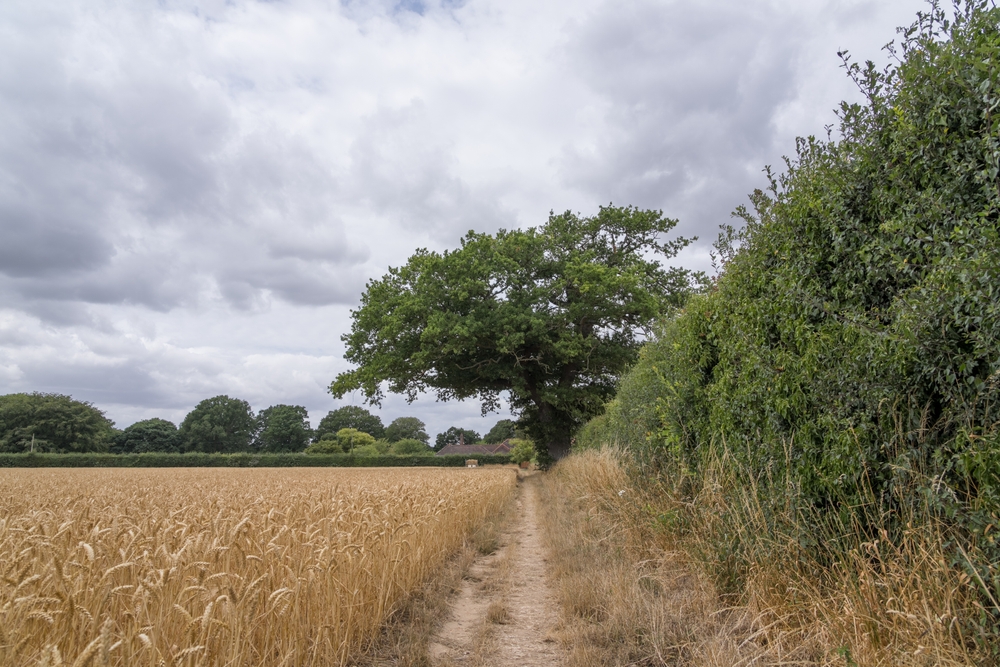
Leaving trees in the field can do more than benefit humans, livestock, and crops. It can help the environment. Trees help eliminate carbon from the atmosphere and regulate microclimates, according to the DGB Group. This helps take greenhouse gas emissions out of the air, store them in the soil, and cycle the nutrients to other plants. They can also provide valuable habitats to wildlife, including endangered pollinators. Some farmers who leave trees in their fields can diversify their income through beekeeping, selling fruit, or timber. If you give living space to certain animals like bats, they will earn their keep by becoming natural pest control. In fact, long-living trees and shrubs like the ones that grow coffee, cocoa or bananas are less likely to suffer from pests in agroforestry systems, according to reNature.
The changing landscape of agriculture
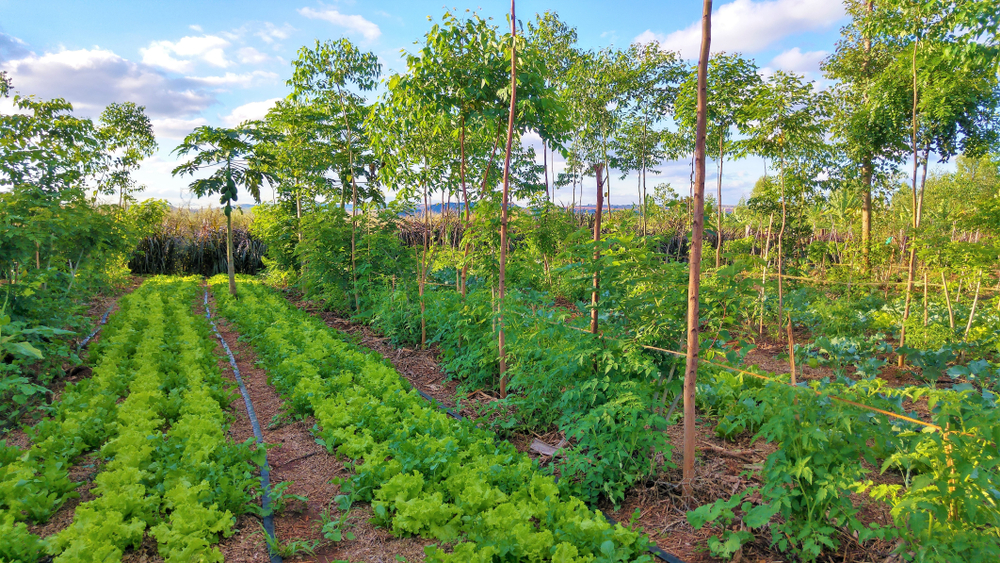
Ancient farmers may have been unaware of the environmental benefits when they planted trees in their field. But as they were enjoying the shade with their livestock, their crops were enjoying the luxuriated soil. Although farmers may leave a lone tree in their field, agroforestry is not commonly used as a system in the Midwest. But researchers are hoping to change that. “Expanding these practices across just 5% of suitable Midwestern agricultural land could store 43 million tons of carbon dioxide equivalent (CO2e) per year,” said Chloe Wardropper, assistant professor in NRES, to Science Daily. “That’s a major advantage over cover crops, which are estimated to store about 8.4 million tons of CO2e per year on the same lands.” The ancient, lone tree in the field may be leading the charge to more eco-friendly agriculture.
Read More: Want to double world food production? Return the land to small farmers.
